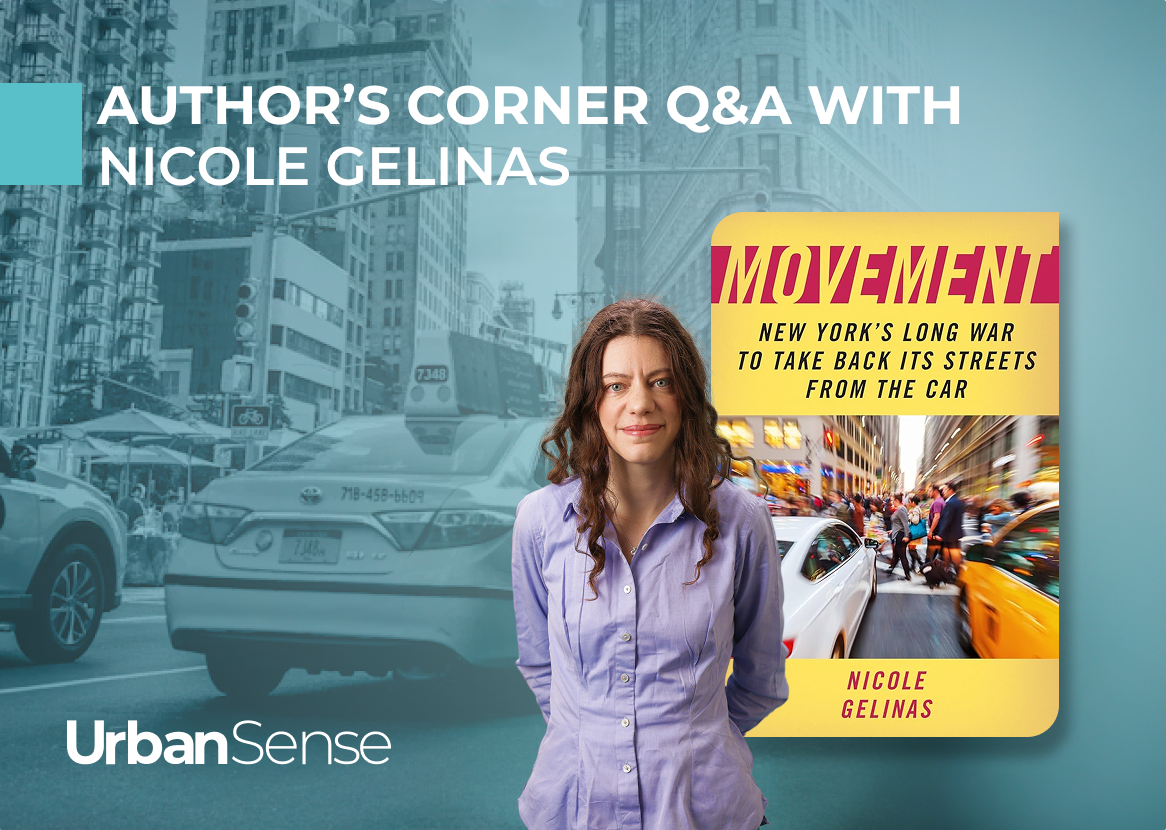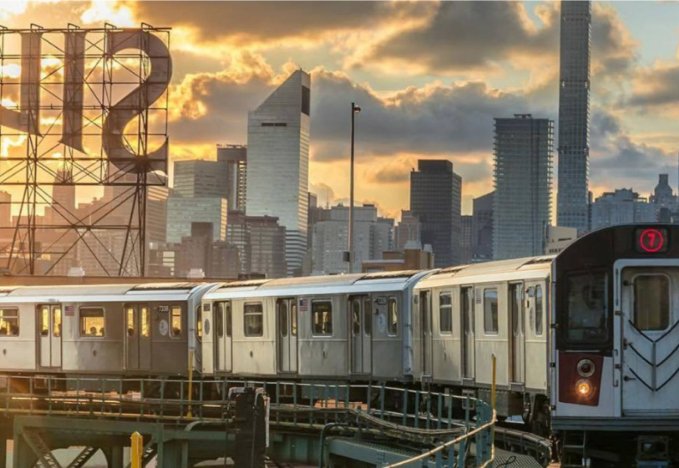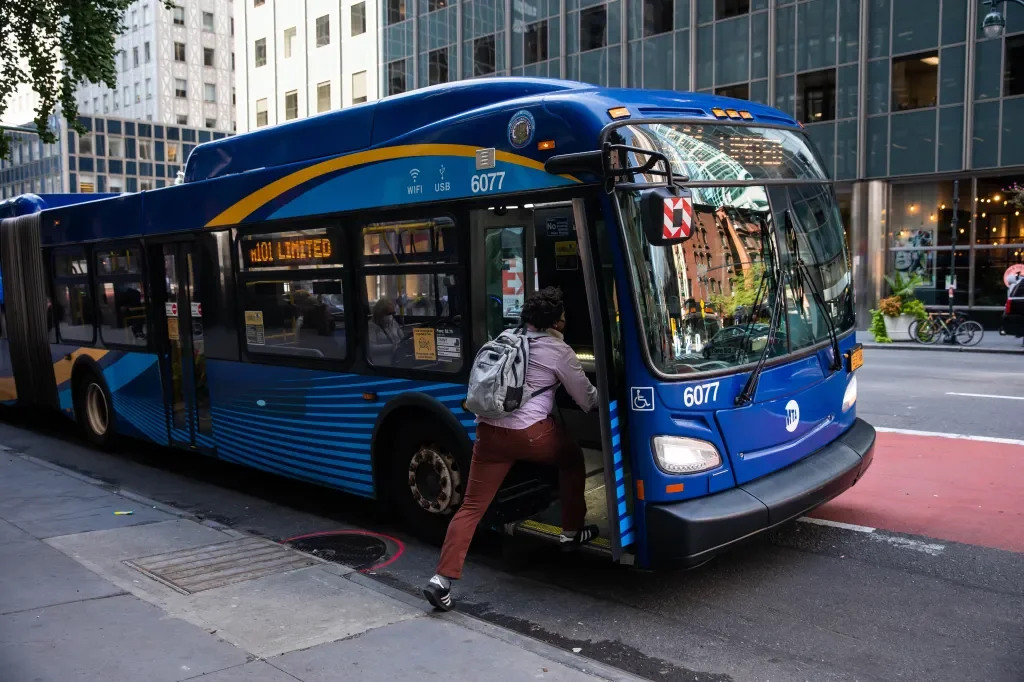The $800 Million Question: Should NYC Buses Be Free?
by Ava Stryker-Robbins
When Zohran Mamdani was running for the mayoral democratic primary, his campaign centered around key policy areas that would aim to make NYC more affordable. Central to his platform - and perhaps one of the most discussed among his many ideas - is a proposal to make buses free and faster.
While there has been extensive debate, particularly in the weeks following his primary win, among advocacy organizations, think tanks, public officials and riders over whether buses should or should not be free, the debate about how buses and public transportation can and should change goes far beyond that.
New Yorkers undoubtedly rely on public transportation to get to where they need to go—meaning they must afford to be able to use it—but they also rely on its safety, reliability, and accessibility. As professional practitioners in support of safe, reliable and accessible public transportation, UrbanSense sat down with other transit experts and officials to discuss the topic.
The Argument for Affordability
According to a 2024 City Limits Report¹, nearly 1 in 5 New Yorkers struggled to afford the then $2.75 bus and subway fare that has since increased to $2.90. For the city’s lowest-income residents—especially those in outer boroughs where subway service is more limited—buses are often the only option to get to work or pick up children from school.
While programs like Fair Fares NYC ² exist to help subsidize the cost of public transportation for low income New Yorkers, only families that make less than $46,617 (for a family of 4) are eligible. This means that many families who live paycheck to paycheck still pay full price on fares.
Many advocates for fare-free buses argue that this policy would actively benefit many New Yorkers who struggle to pay the fare while increasing ridership, increasing bus speeds, and decreasing acts of violence against bus drivers.
Where this Argument Falls Short
In 2023, Mamdani played a key role in establishing a pilot program in the New York State Budget that required the MTA to operate one fare-free bus line each borough. A evaluation³ of this pilot found that while fare-free buses increased existing weekday ridership by 30% and decreased verbal and physical assaults against bus drivers by 19.8%, it also had limited impact on new ridership, it decreased bus speeds by 2.2%, and cost the MTA $12 million.
“My skepticism of [fare-free buses] is you're taking away a lot of revenue from the MTA,” Nicole Gelinas, a senior fellow at the Manhattan Institute shared with UrbanSense.
System-wide fare-free buses would cost the MTA at least $652 million⁴ in lost revenue alone, but could go as high as $800 million. And that is before additional expenditures that would be required to meet new ridership levels: additional buses, expanded or new bus depots for maintenance, and additional labor costs to operate.
“You never give up $800 million that lightly, and you're going to quickly run into the question of ‘if the bus is free, why shouldn't the subway be free?’ And then you're looking at losing billions of dollars in annual revenue with no easy way to replace it,” she added.
“I think what most people would want from bus service is more frequent buses,” Gelinas said. “Mamdani’s absolutely right about the faster buses. We should have many more bus-only lanes and much more camera enforcement of the lanes.”
Another transportation expert, who requested to remain anonymous, also questions how feasible a long term fare-free bus program would be, even if Mamdani found a source of funding.
“Once that temporary funding stream dries up, or some other political leader wants to use it for another purpose, that will directly affect the ability to provide service,” the expert said.
“Look at anywhere outside of Western Europe. Everywhere you look, people pay for transit. It is a service and it doesn't matter if you're talking about some of the poorest countries in the world. You're still paying for that service,” the expert added. “Making it faster is what's actually better because people’s time is worth more than the fare. I think that that's what people don't fully process.”

Related Content
Movement: New York’s Long War to Take Back Its Streets from the Car | Author’s Corner Q&A with Nicole Gelinas
Nicole Gelinas, senior fellow at the Manhattan Institute and 2025 Gotham Prize winner, joins Author’s Corner to discuss Movement, her latest book chronicling New York City’s century-long battle to reclaim its streets from car dominance. In this candid conversation, she reflects on what NYC’s transit history teaches us about the complexity—and urgency—of enacting meaningful urban change.
The Argument for Speed and Reliability
According to NY1⁵, New York City’s Independent Budget Office recently released a report which revealed that New York City’s bus service is among the slowest in the country. This is despite the fact that over 1 million⁶ , or 12% of, New Yorkers rely on the bus each day.
“We have the worst speeds in the entire country and the responsibility for the improving speed issue falls directly on the mayor's office,” an international transportation expert told UrbanSense. “This is not a problem that the MTA can fix.”
“People fundamentally don't understand the difference between what is the city's responsibility and what is the MTA's responsibility,” the expert added. “The MTA runs bus service. But New York City DOT controls the streets.”
According to an April 2025 NYC Comptroller’s report⁷, NYC buses do not reach stops at their scheduled time 30% of the time and bus speeds have not increased in the past 10 years despite city efforts to increase bus speeds by 25%. NYC is currently failing its own targets.
The Comptroller’s recommendations to address bus speeds were not to make buses free, but to expand the fair fares program to New Yorkers with incomes at 200% of the federal poverty line and to CUNY students. The report also suggested designing and implementing new Select Bus Service routes, standardizing bus lane operating hours, expanding fare enforcement operations, making buses accessible to people with disabilities, and more.
“Time is money,” the international transportation expert added. “For someone making [NYC’s minimum wage of] $16.50 an hour, saving 15 minutes is worth more than the cost of a fare.”
According to a recent StreetsBlog article ⁸, free buses would increase speeds by 12%, as passengers would be able to onboard buses from all doors, as well as increase ridership by 20% while seeing limited mode shift out of vehicles onto public transit. These findings both support and contradict the MTA’s own free bus pilot findings which showed free fares slowed buses and also resulted in limited new ridership.
Additionally, without an increase in the number of buses deployed overall, fare-free buses risk becoming even more overcrowded and inefficient. Even if individual buses are able to spend less time at each stop, passengers may need to wait for multiple buses until they can physically fit on the bus, increasing their overall wait and commute time.
Gelinas proposed that the onboarding process could be made faster under the current fare structure if buses were to have fare inspectors check to ensure people paid instead of having everyone individually file through the front bus door, similar to how the MTA’s Select Bus Service enforcement happens now.
On Accessibility
For many New Yorkers, buses are the only accessible means of public transportation. For those who live in subway deserts, who have disabilities, the elderly, and even parents with strollers rely on buses to take them where walking and subways cannot.
“The bus is much more accessible to all…populations,” Nicole Gelinas shared. “And we don't think of that all of the time when we talk about making improvements to the bus.”
Currently, 136 out of 493 stations, or 28%¹⁰ , are accessible. And while the MTA is required ¹¹ to devote 15% of the subway's capital budget toward increasing accessibility, has agreed to make 95% of subway stations accessible to people with disabilities by 2055, and recently announced additional upgrades in the 2025 - 2029 Capital Plan that would make an accessible subway station available to 70% of riders ¹², the bus, though imperfect, currently serves as the most accessible mode of transportation.
Another Consideration: Fare Evasion
Arguments for or against fare-free buses are complicated by the fact that nearly 50% ⁹ of New Yorkers who take the bus do not pay the fare.
Fare-free buses would not cost the MTA revenue that is not being earned in the first place and the financial benefits to riders on fare-free buses are also limited, as many people who can not or do not want to pay the fare are not paying already. But making buses free may influence how people view the subway fare or transportation costs at all, thus leading to overall systemic complications.

Case study spotlight
Reducing Fare Evasion in the NYC Subway
UrbanSense partnered with the NYC Mayor’s Office of Criminal Justice to understand the underlying issues leading to rising subway fare evasion.
Conclusion
Fare-free buses may or may not be a possible—or at least partial—answer to NYC’s affordability crisis. But Mamdani’s focus on the bus has the potential to improve the quality of transportation for many New Yorkers if more attention is paid to bus speed, reliability, accessibility, and safety. Hence, focusing on whether buses should be free is actually asking the wrong question that misses the bigger picture. The real issue isn't exclusively about the cost of riding—it's whether the ride is worth taking at all.
¹ By Jeanmarie Evelly. (2024, March 15). More New Yorkers Are Struggling to Afford Public Transit: Report - City Limits. City Limits. https://citylimits.org/more-new-yorkers-are-struggling-to-afford-public-transit-report
² Fair Fares NYC. (n.d.). https://www.nyc.gov/site/fairfares/index.page
³ MTA. (2024, July 29). Fare-Free Bus Pilot Evaluation. https://www.mta.info/document/147096
⁴ The City of New York Independent Budget Office. (2023, February 22). Estimated Cost of Free Bus Fares Letter. https://www.ibo.nyc.ny.us/iboreports/estimated-cost-of-free-bus-fares-letter-february-2023.pdf
⁵ By Victoria Manna. (2025, February 6). Report Finds City Bus Service Among Slowest in the Country. https://ny1.com/nyc/all-boroughs/traffic_and_transit/2025/02/07/report-finds-city-bus-service-slowest-in-country
⁶ MTA. (2023). Subway and Bus Ridership for 2023. https://www.mta.info/agency/new-york-city-transit/subway-bus-ridership-2023
⁷ Office of the New York City Comptroller. (2025, April 10). Behind Schedule: How New York City’s Bus System Slow Rolls Riders. https://comptroller.nyc.gov/reports/behind-schedule-how-new-york-citys-bus-system-slow-rolls-riders
⁸ By Dave Colon. (2025, April 14). Free Buses Would Mean 12% Faster Rides And 20% More Riders: Study. https://nyc.streetsblog.org/2025/04/14/free-buses-would-mean-12-percent-faster-rides-and-20-percent-more-riders-per-year-study
⁹ By Ana Ley. (2024, August 26). Fare Evasion Surges on N.Y.C. Buses, Where 48% of Riders Fail to Pay. https://www.nytimes.com/2024/08/26/nyregion/nyc-bus-subway-fare-evasion.html
¹⁰ MTA. (2024). Working Together to Elevate Transit Accessibility. https://www.mta.info/accessibility/zoning-for-accessibility
¹¹ By Deanna Garcia and Rebecca Greenberg. (2022). MTA to Expand Accessibility to Most Subway Stations by 2055. https://ny1.com/nyc/all-boroughs/transit/2022/06/23/mta-to-expand-accessibility-to-most-subway-stations-by-2055
¹² MTA. (2025, July 22). ICYMI: Governor Hochul and MTA Celebrate Disability Pride Month with Announcement of 12 New Stations Included in Accessibility Expansion. https://www.mta.info/press-release/icymi-governor-hochul-and-mta-celebrate-disability-pride-month-announcement-of-12-new
https://www.zohranfornyc.com/
discover more of Our Services

Policy Research & Analysis
Best practices, market insights, and data analysis to inform decisions and avoid common pitfalls.

Community engagement
In-depth user research, workshops, and surveys to co-create meaningful, user-driven solutions.
Economic Development
Delivering comprehensive economic development solutions that bridge technology, policy, and community needs.



